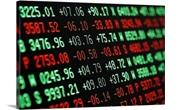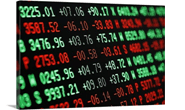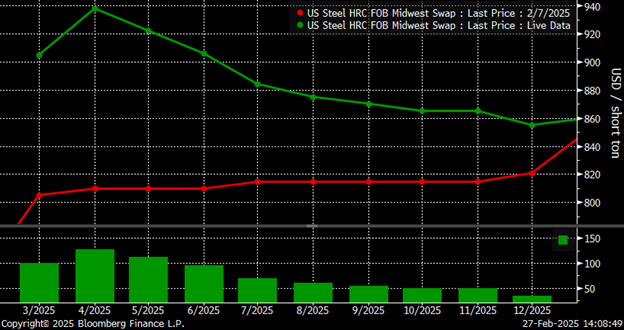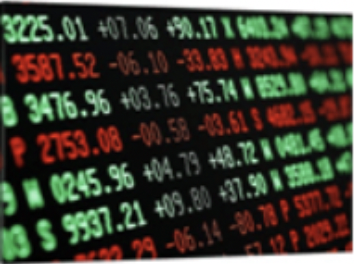Futures

Hot Rolled Futures Take a Leg Down...
Written by Bradley Clark
February 20, 2014
The hot rolled coil futures market took a leg down this week as offers down the curve became more aggressive. After weeks and months of a fairly static forward curve, this renewed downward pressure of the past few days has shaken up the market.
The Q2 traded today as low as $623, the Q3-4 at $627 with weight remaining on the offer side. Bidders seemed happy to sit back at lower levels and wait for sellers to come down. Buying around $620 may prove to be a good trade particularly on more deferred periods as the market has a tendency to move into contango when the physical market moves down too aggressively. Nothing much has changed in the spot market over the past few weeks, with the threat of looming imports in the coming month keeping buyers cautious.
Volumes this week have been much better with over 10,000 tons trading over all periods down the curve. The uncertainty in the market and the strong difference of opinions between the bulls and the bears has led many traders and market participants to jump off the fence. As the spot falls and the curve is changing shape from steeply backwardated to a more flat shape, it seems $627-630 for Q2, Q3, Q4 periods appears to be valid.
The physical market remains steady with prices trading around $650 per ton.
Below is our interactive graph of the hot rolled coil forward curve. You can only view the graphic when logged into our website. If you have not logged in prior to this newsletter and you need our assistance please contact us at: info@SteelMarketUpdate.com or 800-432-3475 and we can reset your password and assist in the process of getting you activated and acclimated on our website.
{amchart id=”73″ HRC Futures Forward Curve}
U.S. Midwest #1 Busheling Ferrous Scrap (AMM) Prices Look to Soften Further
The busheling market continues to be weak even mid-month as an abundance of prime scrap is around. With both bulk and container export business anemic and finished steel demand waning in the US, busheling looks to make another move down in March. The drop may not be as big as in February but the downward direction is definitely solidifying. The futures market remains quiet with no trades being reported. However, renewed buying interest has appeared for July and October months around $360 and $370. As with the HRC market, the scrap market looks at the near term weakness as a second half of Q1 and Q2 challenge before regaining ground going into the summer and second half of the year.
Again, there have been no reported trades this past week.
Below is the interactive graph of the #1 busheling scrap (BUS) forward curve. As with the HRC forward curve graphic above you need to be logged into the website in order to view the graphic.
{amchart id=”74″ BUS Futures Forward Curve}
Bradley Clark
Read more from Bradley ClarkLatest in Futures

HR Futures: Nascent rally in HRC futures settles above 6-week downtrend
The CME Midwest HRC futures market’s response to Trump’s election and subsequent comments about blanket 25% tariffs on Canada and Mexico was surprisingly counterintuitive.

HR Futures: Market at crossroads after turbulent run
The market appears to be pausing after a turbulent run. But tension remains just beneath the surface. With net long positioning still elevated, sentiment-driven selling could quickly reignite volatility. Still, supply constraints and limited imports are laying the groundwork for a resilient physical market. This moment of calm feels more like a crossroads than a conclusion.

HR Futures: Traders’ views mixed as market navigates tariffs
A look at the HR futures market.

Market pressures trigger HR futures reversal
Market dynamics are shifting rapidly, with futures pricing diverging from physical fundamentals, creating a complex landscape for steel traders.

HR Futures: Correction in market after big rally
Another eventful week in the physical and financial steel markets is coming to a close, but with a markedly different tone than the last update at the end of February.
